ARCHIVED: Chapter 17. Full Depth Reclamation (Case Histories And QC/QA)
| << Previous | Contents | Next >> |
Introduction
Full depth reclamation is a rehabilitation technique in which all of the asphalt pavement section and a predetermined amount of underlying materials are treated to produce a stabilized base course. The procedure consists of five steps:
- pulverization of existing material,
- introduction of additive,
- shaping of the mixed material,
- compaction, and
- application of wearing course.
In general, asphalt emulsion and stabilizing additives such as portland cement, lime, fly ash, calcium chloride, and foamed asphalt are used in this procedure.
A review of published case studies of full depth reclamation shows that when executed properly, full-depth reclamation can effectively reconstruct pavements by eliminating a variety of distresses. This method provides a very economic alternative to conventional construction methods by reusing the existing pavement material. Some examples of pavement restoration by full depth reclamation are discussed below.
Case Histories
Reclamation of Mt. Wachusett Road, Princeton, MA(1) (1991)
The candidate pavement section was 9.7 m (32 ft) wide consisting of 75 mm (3 in) of HMA over 150 mm (6 in) of macadam base. Although there was no indication of base failure, the surface had become badly potholed. It was decided to use full depth reclamation with the application of liquid calcium chloride to make the material frost resistant.
In 1991, the existing HMA pavement and part of the underlying base was cut and pulverized to an average depth of 150 mm (6 in). A road reclaimer was used for this purpose (figure 17-1). Four passes of the 2.4-m (8-ft) wide machine completed the full width of the roadway. Next, a 35 percent solution of calcium chloride was applied to the pulverized material at a rate of 3.6 l/m2 (0.75 gal/yd2). The calcium chloride solution was applied by a spray bar on the rear of a 14,383 liter (3,800 gal) tank mounted on a truck (figure 17-2). In the next step, the base was pulverized a second time to thoroughly mix the aggregate, asphalt and calcium chloride. A grader was then used to shape the surface and a vibratory roller was used to compact the reclaimed base (figure 17-3). Finally, calcium chloride solution was applied at the rate of 1.2 l/m2 (0.25 gal/yd2) to seal the base surface. The reclaimed surface appeared to be hard, smooth and dust free. It was decided to put 50 mm (2 in) of HMA binder and 32 mm (1¼ in) of HMA wearing course on the reclaimed base. The reclaimed base was found to be capable of accepting traffic before the application of HMA binder and wearing courses (figure 17-4). Throughout the reclaiming process, traffic was allowed on the pavement and there was no need for setting up detours or applying any fog seal to the reclaimed base.
Figure 17-1. Road reclaimer used in FDR.
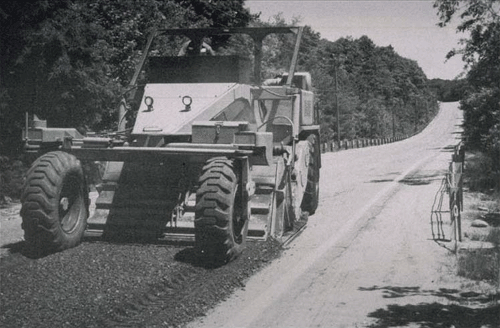
Figure 17-2. Application of calcium chloride.
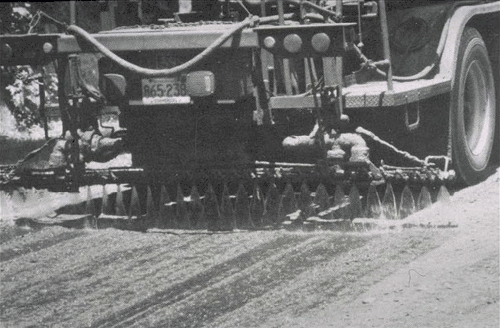
Figure 17-3. Grader.
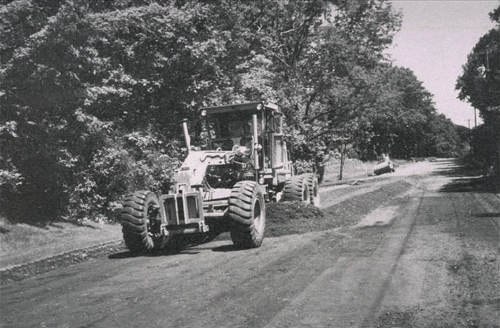
Figure 17-4. Completed surface.
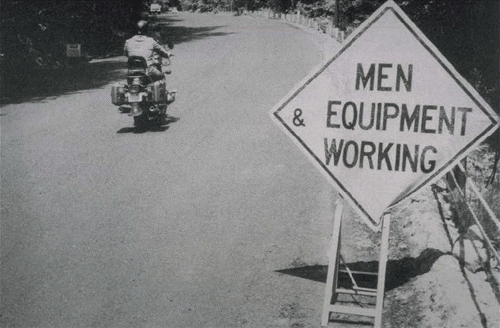
Texas DOT Full Depth Reclamation Process(2) (1995)
In 1995, a project was completed on I-40, west of Amarillo, Texas. The project consisted of processing the 180 mm (7 in) of existing HMA and 76 mm (3 in) of the existing aggregate base. The existing material was milled, pulverized, screened, and treated with cement and water to produce a low strength cement treated base (CTB). The production of CTB base from recycled materials was all completed using two recycling trains. A MC-30 cutback asphalt was used to prime the finished CTB surface. Finally, HMA leveling and surface courses were placed above the CTB. Figure 17-5 shows the recycling train. Cement was applied ahead of the recycling train by a spreader (figure 17-6). The milling machine in the train milled the road material and deposited in the crusher screening unit (figure 17-7). After the material was crushed to the proper size, it was transferred to the mixer where cement, water and the existing material were mixed and deposited on a windrow (figure 17-8). A grader was then used to shape the windrow material (figure 17-9). Finally, a water tanker applied water to the surface (figure 17-10) for curing.
Figure 17-5. Recycling train used in FDR.
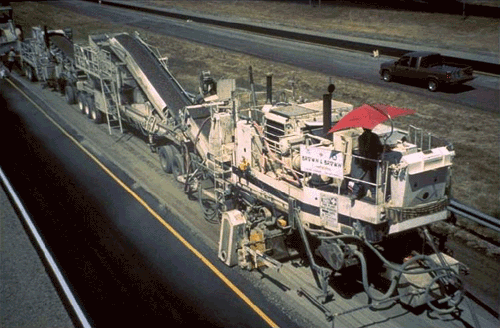
Figure 17-6. Application of cement.
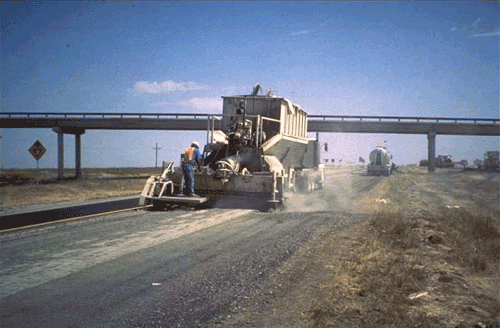
Figure 17-7. Crusher and screening unit.
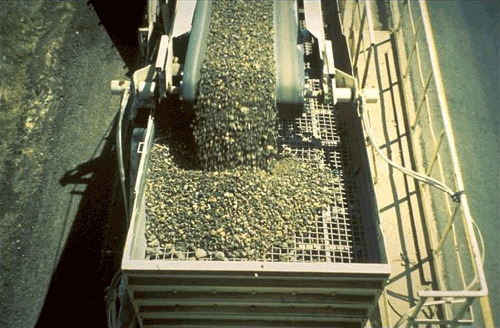
Figure 17-8. Recycled material in windrow from mixer.
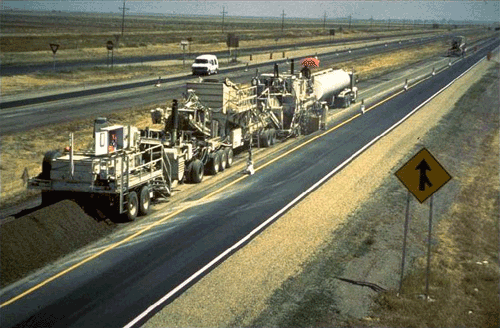
Figure 17-9. Grader.
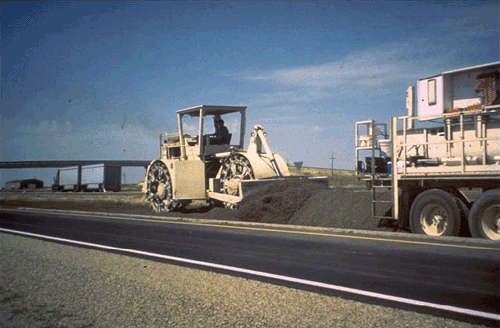
Figure 17-10. Water truck.
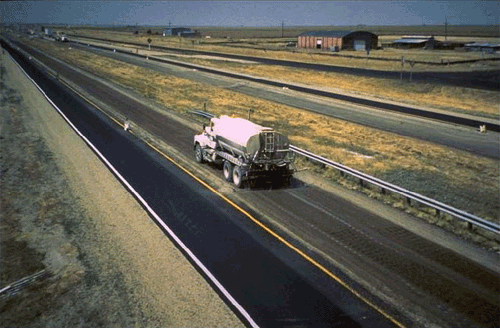
Full Depth Reclamation of Road in Mendota, California(3)
The existing pavement had severe alligator cracking, generally along the outer edges, and block cracking over most of the original surface. The asphalt surfacing was brittle where deflection occurred under loading. Figure 17-11 shows a view of the existing roadway. The structure of the roadway consisted of 40-mm (1.5-in) asphalt over 300-mm (12-in) silty sand of which the top 150 mm (6 in) was stabilized. It was decided to conduct full depth reclamation to a depth of 100 mm (4 in) with foamed asphalt, cement and gravel. The amounts of additives were:
- asphalt: 4 percent by mass of recycled material
- cement: 2 percent by mass of recycled material
- gravel: 50 mm (2 in) layer over area to be recycled.
Figure 17-11. Condition of existing road.
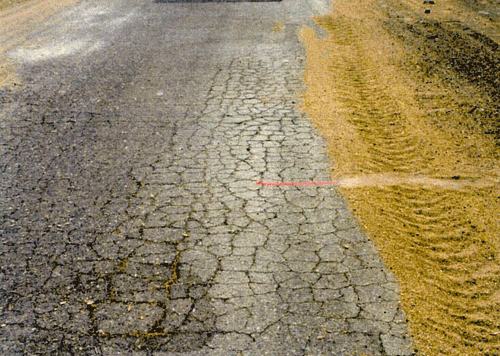
It was decided to use cement along with the foamed asphalt to resist strength loss due to saturation. The gravel was included in the mix to facilitate good dispersion of foamed bitumen, especially with a high percentage of fine material (material passing 75 µm, No. 200 sieve). The amount of foamed asphalt was decided on the basis of laboratory mix design, and the amount of cement was determined from laboratory tests for plasticity of the recycled material. To serve as a wearing course and to prevent water ingress through the surface of the road, it was decided to apply a chip seal after about four weeks of construction of the base. The FDR process was carried out with a single machine along with a grader, spreader, asphalt tank, water tank, vibratory roller (9 Mg), and a pneumatic-tired roller (11 Mg). A schematic of the equipment is shown in figure 17-12. The virgin aggregate was spread by a spreader. Another spreader applied the cement on the existing surface. The grader spread the virgin material in front of the recycler. The recycler was connected to a water tanker and an asphalt tanker. The recycler milled and mixed the existing material with foamed asphalt. Another grader behind the recycler spread out the recycled material, which was then compacted with vibratory and pneumatic-tired roller, respectively. Figure 17-13 shows the recycler attached to the water and asphalt tank. Figure 17-14 shows the recycled material at the back of the recycler. Figure 17-15 shows a grader spreading the recycled material. Figure 17-16 shows a vibratory roller compacting the recycled material, and figure 17-17 shows the completed base course.
Figure 17-12. Schematic of recycler.
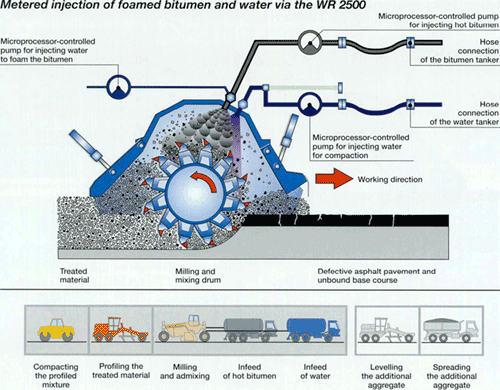
Figure 17-13. Recycler with water and asphalt tanker.
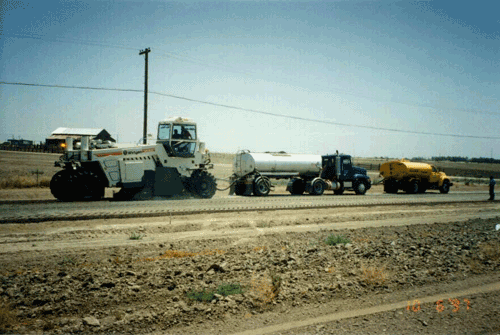
Figure 17-14. Recycled material at the back of recycler.
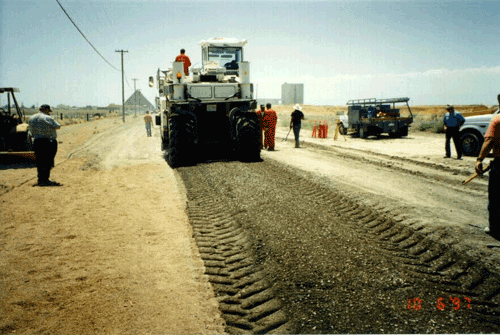
Figure 17-15. Grader spreading recycled material.
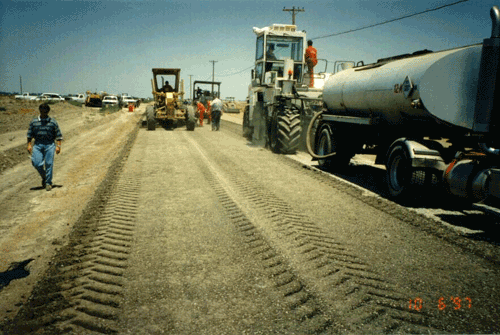
Figure 17-16. Vibratory roller compacting recycled material.
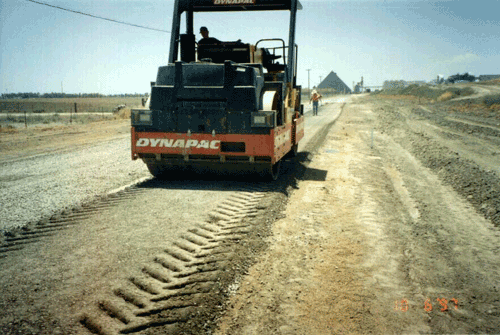
Figure 17-17. Recycled base course.
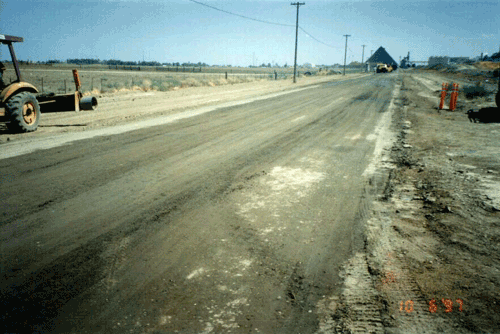
Specifications And QC/QA
Since full depth reclamation is a type of cold recycling of asphalt pavements, specifications and quality control procedures for full depth reclamation are similar to those of cold-mix recycling. There are primarily two types of specifications. The method specification specifies the equipment to be used and all construction processes. An end result specification sets control limits on some test property of the finished pavement. However, as in the case of other recycling procedures, in full depth reclamation it is better to have a specification which is a combination of the method and end result specification. This allows the effective use of the experience and expertise of the user agency, the contractor, and the equipment manufacturer to obtain a good pavement at a reasonable cost.(4) Since there is usually a great variation in material properties in full depth reclamation, specifications for full depth reclamation tend to be more end result oriented than method specification.(5) For example, the specification may allow any type of milling or pulverization equipment, if the depth of the cut and the gradation of the RAP material (for example, top size) meet the required specification tolerance. The top size of the RAP material may be limited by the user agency. The gradation of the existing road materials should be taken into account when writing the specification for the aggregate gradation. Due to the inherent variability of material in full depth reclamation, it may not be practical to specify aggregate gradation for all the sieve sizes. However, the equipments used in full depth reclamation (pulverization, for example) should be capable of cutting the pavement to the specified depth reasonably well. The specification may state that the construction method shall be such as to pulverize the existing asphalt surface to the full depth, and the material shall be 97 percent passing a 50 mm sieve.(6)
The next important thing in full depth reclamation is the specification for the asphalt recycling agent. The recycling agent should conform to the appropriate AASHTO, ASTM or state specifications for different types of asphalt binders, such as emulsified asphalt. Also, the equipment used for adding the recycling agent should be capable of an accurate application rate such that the total binder content of the recycled mix is equal to the job-mix formula amount within a specified tolerance, typically ± 0.5 percent.(5) The specification should also include clear directions regarding accurate application of any pre-mix water, if needed. The responsibility for establishing the job-mix formula and the required sampling procedures, test methods and design criteria for the mix design should be clearly outlined in the specification.(5)
Adjustments to the gradation or asphalt content of the recycled mix can be made based on the results from the extraction tests conducted on recycled mix. Conventional methods of extraction (reflux, centrifuge, vacuum) which solvents are being phased out by many highway agencies. The National Center for Asphalt Technology (NCAT) has developed a test method to determine the asphalt content of HMA mixtures by ignition. The gradation of the aggregate can then be determined using the standard sieve analysis. Larger samples (2,400 grams, 5.28 lb) can also be tested.
The density of the compacted mat is another important test property for specification. The density can be specified either as a percentage of theoretical maximum density or laboratory density, or as a target density. The use of theoretical maximum density is recommended over the use of laboratory density, since there may be substantial differences in temperatures, fluid contents and other conditions between laboratory and field compactions. Specification of a target density (in actual kg/m3, lb/ft3 unit) combined with an adjustable rolling pattern has also been suggested to overcome the problem of material variability in the existing pavement.(7) When deciding on a density specification, prior experience with similar type of recycling and environmental conditions should be taken in account. Typical cold-mix recycling specifications require air voids content in the 12 to15 percent range.(8) This may also be applicable to mixes from full depth reclamation. To obtain desired density, an agency may specify the roller sequence for compaction. For example, for a compacted depth of 150-200 mm, a minimum 22.7 Mg rubber tired roller with 620 kPa tire pressure followed by a minimum 7.2 Mg vibrating steel roller may be specified.(6)
In the absence of proper performance data for developing statistically based specifications, it is suggested that the user agency remains flexible and evaluate several alternatives to encourage competition.(5) The specification should be written in such a way that it reflects the following functions of the user agency:(4)
- Be responsible for the adequacy of design alternatives.
- Write simple straightforward specifications which clearly state what is expected.
- Permit the contractor to select the materials and methods which will accomplish the end result.
- Use standard specifications familiar to the contractor.
- Modify standard specification only as necessary to obtain the end result
- Focus on end results by allowing the contractor flexibility in choosing the most economical methods and procedures to accomplish the work.
The Wisconsin DOT specification for full depth reclamation is provided in Appendix C.
Quality Control and Quality Assurance
Quality control (QC) refers to those tests necessary to control a product and to determine the quality of the product being produced. These QC tests are usually performed by the contractor. Because of greater variation expected in the case of full depth reclamation asphalt mixtures, the frequency of testing should be more, even though the same tests that are used in the case of conventional HMA may be used. Before starting construction, it is very important to know the quality of the existing pavement, in terms of aggregate gradation and asphalt content of the mix. The pavement should first be delineated into subprojects, on the basis of differences in design, maintenance and rehabilitation actions. Once the subprojects are identified, representative samples should be taken from each of the subprojects. In this way, the variation in the existing material can be identified and evaluated.
The quality control for full depth reclamation is primarily dependent upon the equipment used. The equipment should be such as to allow the following operations.(9)
- Pulverization of recycled pavement material to the desired size.
- Proper pre-mix water content (uniformly mixed), if needed.
- Proper recycling agent content (uniformly mixed).
- Attainment of some minimum specified mat density.
Favorable temperature and moisture conditions are necessary for strength development during the curing period. The stabilized surface should be protected from traffic to prevent abrasion and to ensure adequate time for strength development.
Summary
In full depth reclamation technique, all of the asphalt pavement section and a predetermined amount of underlying materials are treated to produce a stabilized base course. The treatment additive can be emulsified asphalt binder, portland cement, lime, fly ash, and calcium chloride. The procedure consists of pulverization of existing material, introduction of additive, shaping of existing material, compaction, and application of wearing course. A review of some case histories show that full depth reclamation can be used successfully and without major traffic flow interruption with the types of equipment available at present. Typical specification and quality control/quality assurance factors include aggregate gradation, stabilizer content, water content, roller weight and sequence, and density measurements.
References
- P. Fournier. "Mt. Wachusett Road Reclaimed with CaCl2," New England Construction, August, 1991.
- Information Received from John E. Huffman, Brown and Brown Contractors, Salina, KS.
- Information Received from Connie L. Murray. Wirtgen America Inc., Nashville, TN 37224.
- R.C. Inberg. Specifications Related to Project Selection, Transportation Research Record 780, TRB, Washington, DC, 1980.
- Pavement Recycling Guidelines for Local Governments - Reference Manual, Report No. FHWA-TS-87-230, FHWA, Washington, DC, 1987.
- Wisconsin Specification on Full Depth Reclamation, Wisconsin Department of Transportation, 1997.
- "Special Report: Asphalt Recycling and Reclaiming '85," Roads and Bridges, October, 1985.
- J.A. Epps. Cold-Recycled Bituminous Concrete Using Bituminous Materials, NCHRP Synthesis of Highway Practice 160, TRB, National Research Council, Washington, DC, 1990.
- J.A. Epps. State-of-the-Art Cold Recycling, Transportation Research Record 780, Transportation Research Board, Washington, DC, 1980.
| << Previous | Contents | Next >> |

